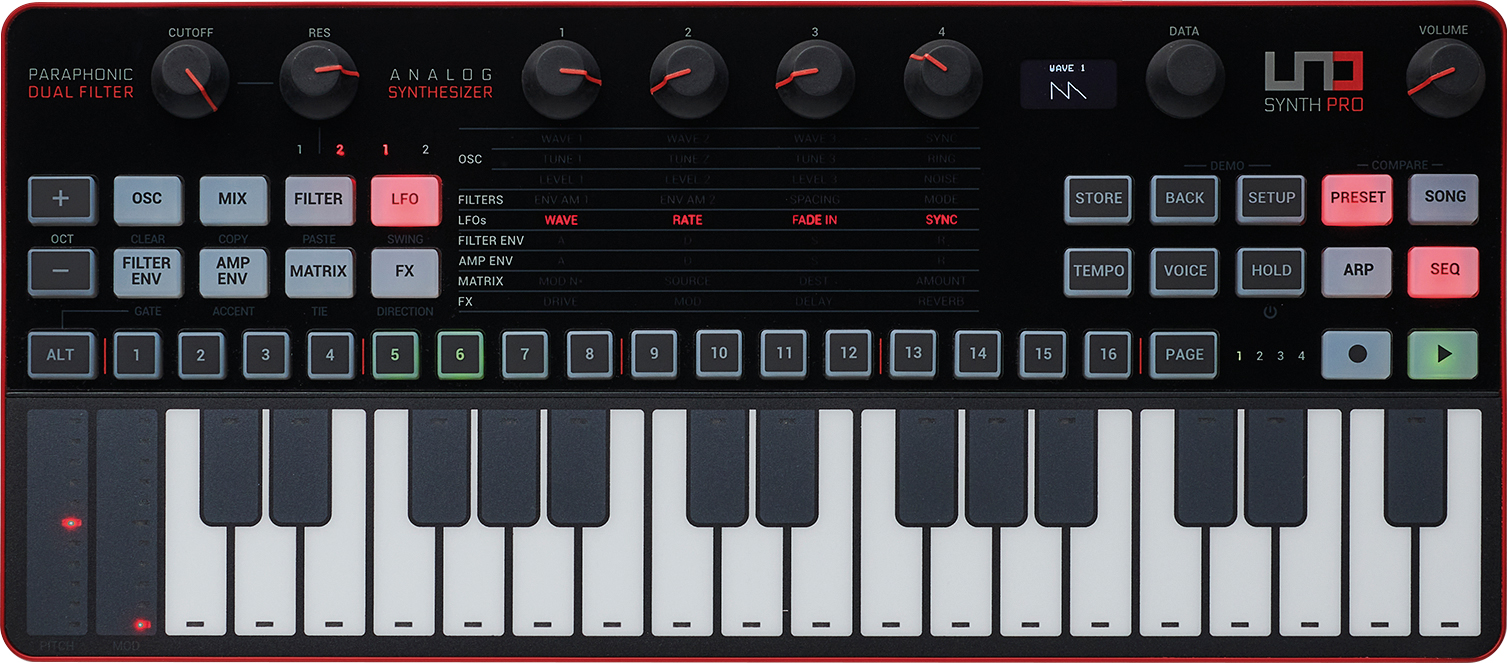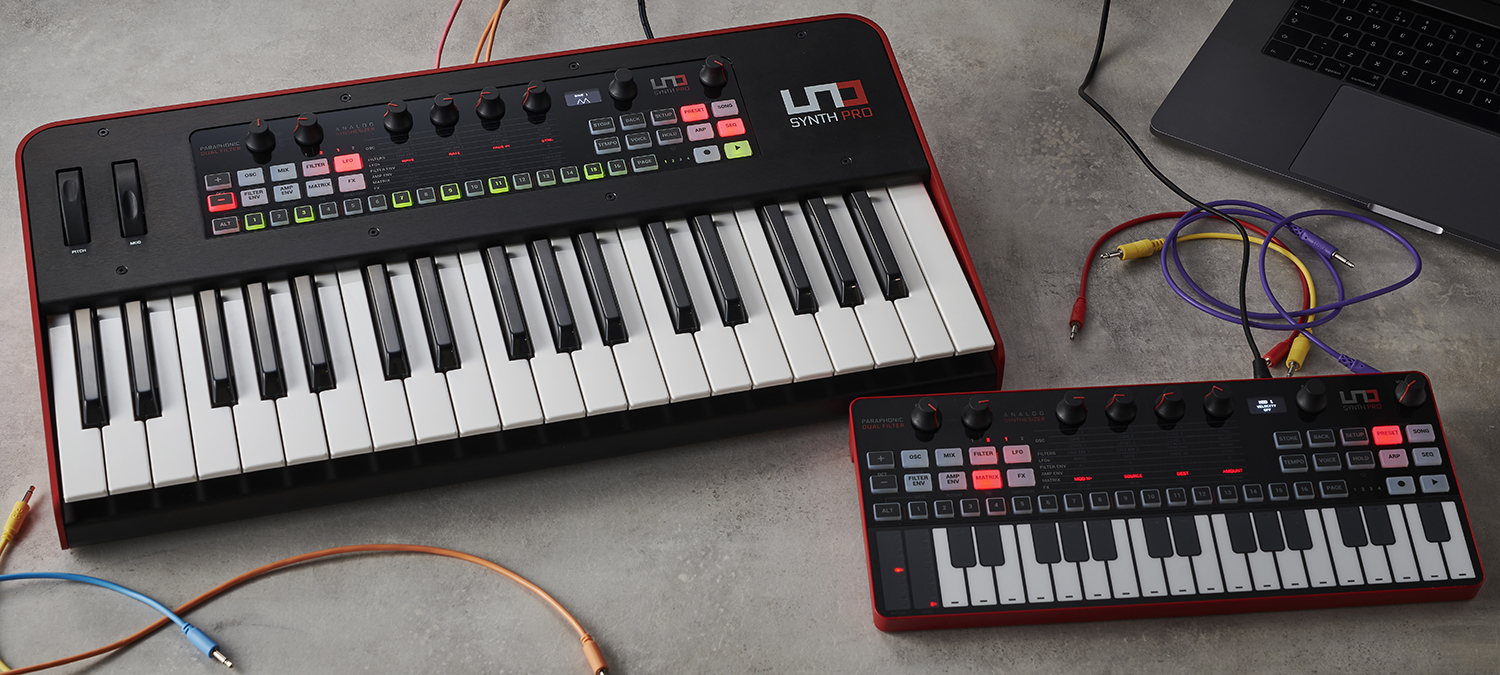MusicRadar Verdict
Shames some much more expensive instruments, with a whole raft of functions and features you’d expect to pay twice as much for.
Pros
- +
Some excellent stereo effects.
- +
Sequencer is very capable.
- +
Full keyboard feels good.
Cons
- -
Desktop version feels slightly less sturdy.
- -
Some menu diving to navigate.
MusicRadar's got your back
What is it?
K Multimedia’s latest synthesizer offering comes in two flavours; the desktop version with its touch-sensitive keyboard, pitch and mod strips, and the full version, which has a full size, semi-weighted Fatar keyboard.
The keyboard version is obviously is larger, sporting a heavy-duty metal enclosure, as well as physical wheels for pitch and mod. Those differences – and the keyboard version’s power socket – aside, the two are identical. The user interface and innards are exactly the same, so choosing which to get becomes a matter of which ergonomics you prefer, rather than any capabilities of the two.
With that in mind, it’s worth noting that while the desktop’s keyboard is quite responsive and playable, the pitch and mod strips are a little less so, occasionally missing input. In all likelihood, this won’t be too much of a problem, as most users will be controlling this from their DAW or a controller keyboard.
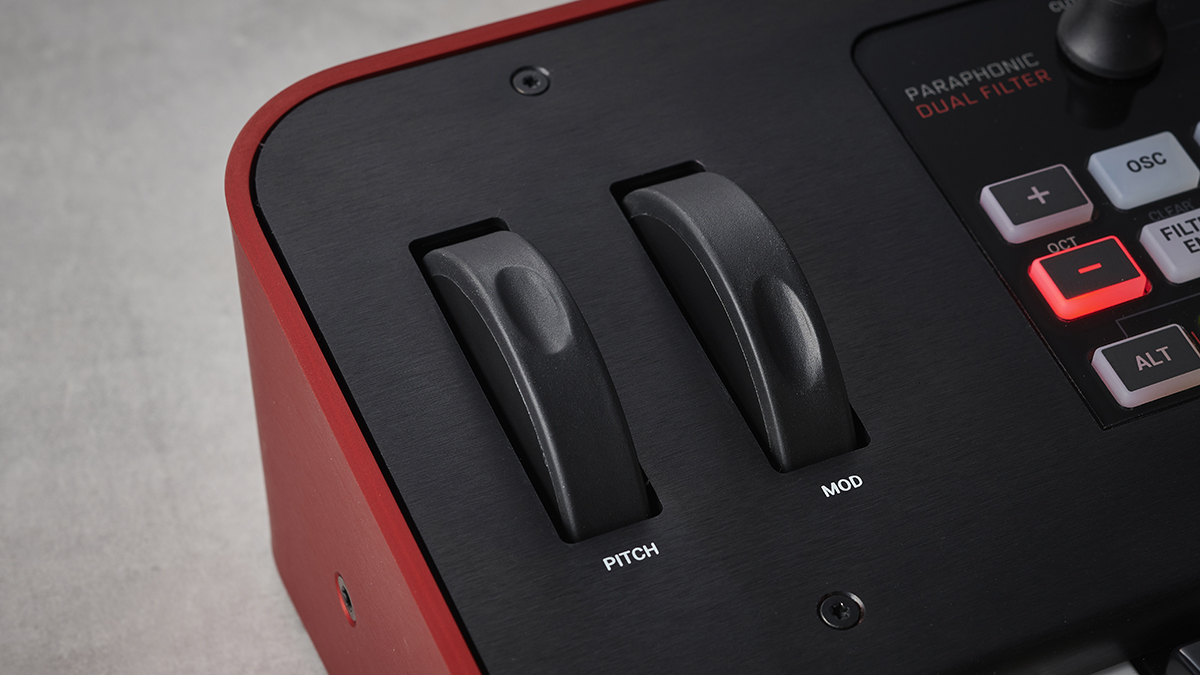
Ports are plentiful, with full-size MIDI sockets, a pair of ¼” jacks for audio out (the effects are stereo), some CV and micro USB. Both variants can be powered by USB but this can introduce unwanted noise, so the full version also offers a power brick. USB power banks work too and appear to be less of a noise issue, meaning that if you want a portable synth for travel the desktop might actually be better, whereas for stage situations the keyboard is the better choice.
The UNO Synth Pro, in both its guises, has two channels of gate and cv in and out, adding an extra layer of functionality that is rare at this price (although it’s becoming more common with the surge in modular equipment).
The easiest way to take advantage of these is through the mod matrix, where the ports can be assigned however you like. If you like euclidean sequences then you could have one sending gates to the UNO. Maybe send the value of the mod wheel to an external effect, or you can send an LFO to your rack to sync up modulating a piece of Eurorack equipment.
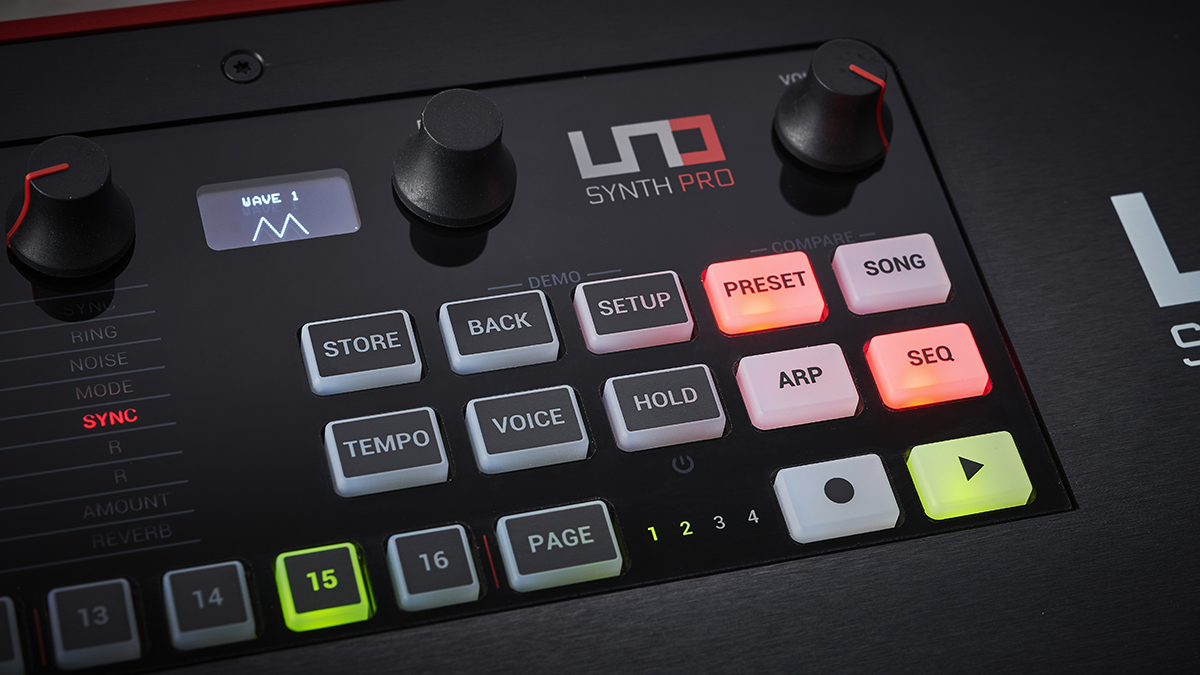
Performance and verdict
On to the sounds then – here the UNO shines and from here on out, both models are identical. The UNO sports three analogue VCOs and a white noise generator, all with some great tone shaping options. Each of the three oscillators has continuous wave shape variations from saw to pulse width, with modulation.
There are two analogue state variable filters, with dedicated cutoff and resonance controls. The potentiometers all feel smooth and firm, with a nice amount of resistance and, while the filter controls are dedicated, the function of most changes dependent on the active menu.
Want all the hottest music and gear news, reviews, deals, features and more, direct to your inbox? Sign up here.
At first that may seem off-putting, but it really only takes a few minutes to get to grips with that, as the grid below them makes it very clear, with illuminated labels indicating what is happening. The final potentiometer is for master volume, leaving a single clickable rotary control for data.
This feels slightly less robust but that’s the nature of the beast (without hardstops and its need to be pressed as well as turned). Thankfully, although there is some menu diving, it’s all logically implemented. You’ll find it hard to get lost.
Back to the sound shaping. Quick access buttons to the left get you where you need most, from the VCO, mix, filter, LFOs, filter and amp envelopes, mod matrix and effects.
Pushing any one of these highlights the labels for the four controls. These aren’t changeable but do present the most obvious choices. Take the LFOs as an example, where the main controls are wave, rate, fade in and sync.
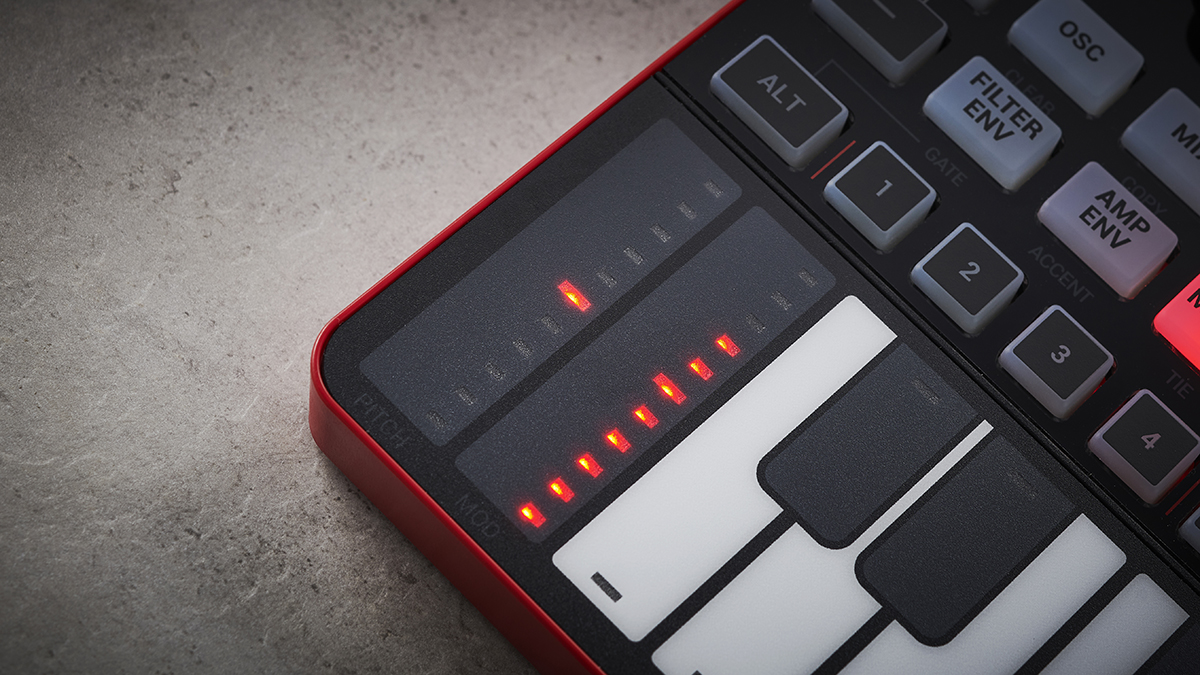
These four controls are all you get and can also be accessed and changed by the data encoder, with a visual representation on the display. Selecting between the two LFOs (or the filters) is a simple case of pressing the button again, with a telltale label lighting to show you which is being adjusted.
The filters themselves are state variable and they’re totally discreet, with various modes and settings for amount and spacing, so dialling in complex tones is really easy, especially with the mod matrix.
There is plenty of control available to shape just about any kind of synth sound you can imagine.
The matrix itself utilises the same four knobs to select the mod number (including aftertouch and velocity), the source which covers everything from oscillator levels right through to CV gate and sequencer ties, so a lot of capability to unleash. The fourth knob is for controlling the modulation amount. The matrix is a doddle to use, fast and powerful, belying its appearance.
The two envelopes, one each for filter and amp, are both ADSR envelopes with fairly decent ranges. This leaves the effects section, which is one of the strongest (mostly) digital effects you’ll find on a synth at this price, or far beyond.
The effects are limited to Drive, Chorus, Delay and Reverb, which may not seem like a lot but I’d rather have fewer great effects and a host of average ones. Hit the FX button and turn the corresponding knob to set the amount, then use the data encoder to dive deeper into things like delay type, chorus colour, or reverb pre-delay.
This is where the menu diving comes in but it’s only a couple of levels deep. All the effects sound wonderful; however, the drive – the only analogue effect here – is our top pick, as it provides plenty of warmth and can really scream. Team it with resonance and use the mod wheel to control it and you get some almost guitar-like lead sounds or aggressive basses.

Chorus is very clean and also acts as a flanger and phaser; the delay has a heap of options, including a fantastic ping pong. Reverbs range from small plates, through to large hall type, each sounding good, with enough control to dial in just what you need.
There is plenty of control available to shape just about any kind of synth sound you can imagine, with 256 preset slots to use, many of which come with entries all ready for you to play.
As with any synth, many of these may not be to your taste but they do give a good starting point to create your own and to check out some of the possibilities. Loading and saving are done to the right, where you’ll also find the buttons for tempo, voice, hold and arp and sequencer.
The biggest decision here is not whether you should shortlist it but which of the two variants to get.
There’s also a song mode, which is useful but also the most finicky setting to use. The setup button for master settings is here also. A click of the data encoder takes you into things like master tune, MIDI settings and so on. All simple but useful stuff.
For us, one of the stars of the show here is the sequencer. Sure you can hit record and capture a live performance and you can treat it like a standard step sequencer but you can also sequence modulations per step with it. This isn’t overly new. In fact one of our favourite synths, the Sequential Pro 3, has this, as does the Moog One and a few others.
What excites us is the fact that the UNO comes in at such a good price point and offers such a capable instrument. It has a really simple workflow too. Select a step, out of the 16 step buttons, of which there are four pages, for 64 in total (more if you want to head into song mode) and adjust the parameter you want. Playback will have those modulations locked in place, giving your hands more freedom to interact on the fly. Complex performances are a breeze with this setup and it is a real joy to use.

One last button needs mentioning: the ALT button. This is basically a shift, giving certain other buttons a second function. Labelling for these is clear if a little dim but preferable to more menu diving, as it is for things like Ties, accents, copy and paste.
Yes, copy and paste, which works for things like copying step information from one step to another, speeding up the process of setting rhythms up using the sequencer – great when using locked mod steps you want to reuse.
All in all, this is a great instrument and one that definitely punches over its weight class, in terms of sound and functionality. When first seeing photos of these we thought they’d feel more akin to playing a plugin but the reality is far from that.
The biggest decision here is not whether you should shortlist it but which of the two variants to get. Both come with compromises but either would be a great addition to your arsenal, on the road, stage or in the studio.
MusicRadar verdict: Shames some much more expensive instruments, with a whole raft of functions and features you’d expect to pay twice as much for.
Hands-on demos
Loopop
Synth Anatomy
BoBeats
Specifications

- 3 discrete wave-morphing oscillators
- PWM, sync, FM and ring modulation
- Dual state variable filters with 24 modes
- Original UNO Synth OTA filter
- New SSI-based filter with self-oscillation
- 16-slot modulation matrix
- 256 user-editable presets
- 12 studio-quality FX in 3 slots
- Reverbs, Delays, Modulations
- 64-step sequencer with 84 parameters
- 10-mode onboard arpeggiator
- USB / MIDI / CV / Gate in/out
- Audio input to filters, FX or pass-through
- Contact: IK Multimedia
